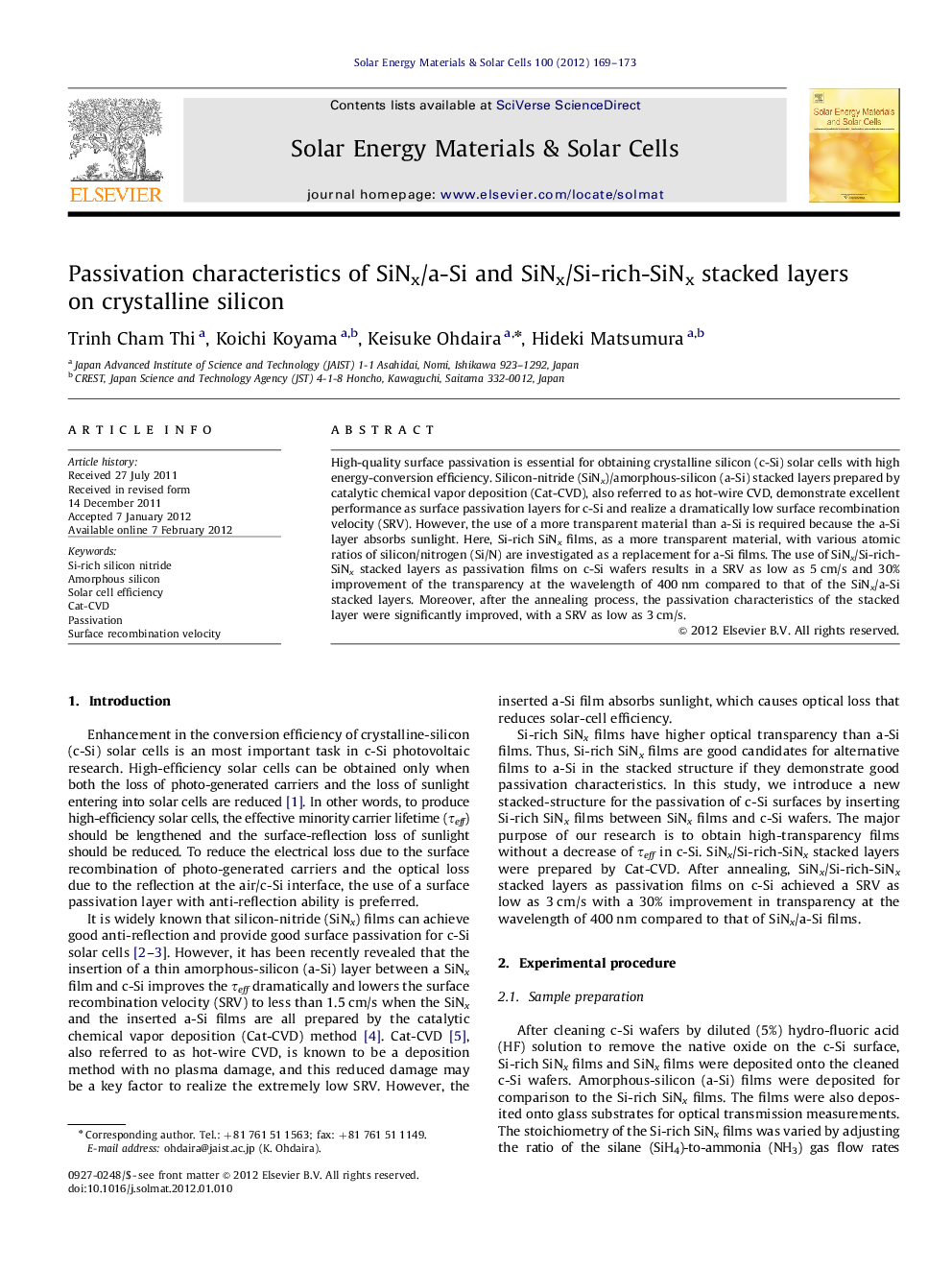| Article ID | Journal | Published Year | Pages | File Type |
|---|---|---|---|---|
| 78389 | Solar Energy Materials and Solar Cells | 2012 | 5 Pages |
High-quality surface passivation is essential for obtaining crystalline silicon (c-Si) solar cells with high energy-conversion efficiency. Silicon-nitride (SiNx)/amorphous-silicon (a-Si) stacked layers prepared by catalytic chemical vapor deposition (Cat-CVD), also referred to as hot-wire CVD, demonstrate excellent performance as surface passivation layers for c-Si and realize a dramatically low surface recombination velocity (SRV). However, the use of a more transparent material than a-Si is required because the a-Si layer absorbs sunlight. Here, Si-rich SiNx films, as a more transparent material, with various atomic ratios of silicon/nitrogen (Si/N) are investigated as a replacement for a-Si films. The use of SiNx/Si-rich-SiNx stacked layers as passivation films on c-Si wafers results in a SRV as low as 5 cm/s and 30% improvement of the transparency at the wavelength of 400 nm compared to that of the SiNx/a-Si stacked layers. Moreover, after the annealing process, the passivation characteristics of the stacked layer were significantly improved, with a SRV as low as 3 cm/s.
► SiNx/Si-rich SiNx layers were prepared by Cat-CVD at a temperature of 250 °C. ► The stacked layers show good passivation ability on c-Si wafers. ► Surface recombination velocity (SRV) obtained is as low as 4.4 cm/s. ► SRV is improved significantly after annealing at 350 °C for 30 minutes. ► Using Si-rich SiNx contributes greatly to reducing optical loss in c-Si solar cells.
